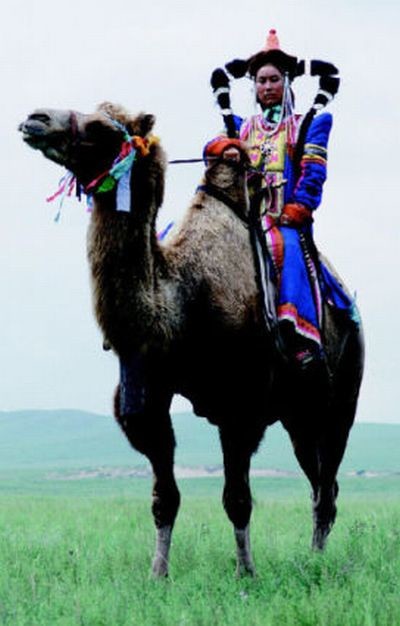★★★
“Not sure if serious…”
 The scenario here could be the jumping-off point for a wilderness adventure, with a train going across Mongolia being held up by a tribe of nomadic locals. and the Western women on board taken hostage by the princess who leads them (Xu). But it ism’t. Indeed, Ottinger seems almost deliberately to go out of her way to avoid anything that might increase the pulse above a resting rate. What follows is more a depiction of rural Mongolian life, which appears to have changed very little since the era depicted in Warrior Princess. It’s a topic that seems to have entranced the director, as she went on to explore the topic at greater length in Taiga – and when I say “greater length”, I mean it, since that film lasts eight hours and 21 minutes. This clocks in at a comparatively brisk 165 minutes, with the first hour almost entirely within the confines of the Trans-Siberian and Trans-Mongolian Expresses, before exploding out into the wide, sweeping vistas of the Mongolian steppe.
The scenario here could be the jumping-off point for a wilderness adventure, with a train going across Mongolia being held up by a tribe of nomadic locals. and the Western women on board taken hostage by the princess who leads them (Xu). But it ism’t. Indeed, Ottinger seems almost deliberately to go out of her way to avoid anything that might increase the pulse above a resting rate. What follows is more a depiction of rural Mongolian life, which appears to have changed very little since the era depicted in Warrior Princess. It’s a topic that seems to have entranced the director, as she went on to explore the topic at greater length in Taiga – and when I say “greater length”, I mean it, since that film lasts eight hours and 21 minutes. This clocks in at a comparatively brisk 165 minutes, with the first hour almost entirely within the confines of the Trans-Siberian and Trans-Mongolian Expresses, before exploding out into the wide, sweeping vistas of the Mongolian steppe.
Until then, it introduces us to the Western women, led by Lady Windermere (Seyrig), an ethnographer who knows both the Mongol culture and their language – skills which prove fortuitous, to say the least. The others include a Broadway singer (Scalici), and a young backpacker (Sastre), whose use of a Sony Walkman – kids, ask your parents! – is about the only thing which locates this in a specific era. But once they are taken hostage, for reasons which are never even hinted at, the film largely loses interest in them, save the backpacker, who appears to “go native” more than the others. It becomes more about the princess, for whom “action” is simply part of everyday life. She hunts with her bow and arrow; she talks with visiting emissaries from other tribes, treating them with scorn where appropriate. She rules – in the literal, rather than the social media corrupted sense of the word.
Quite what any of this has to do with Joan of Arc escapes me entirely. The whole movie feels like some kind of trolling exercise, aimed at readers of this site, by having the pieces in place for an action heroine film, and then steadfastly refusing to deliver on it. But if so: hah! Joke’s on them, because I didn’t actually hate this. Seyrig, who was the star of one of the best Euro-horrors of the seventies, Daughter of Darkness, is always worth watching – or, more relevantly, worth listening, as her voice sounds like slowly melting butter. There is enough quirky eccentricity early on, such as the Kalinka Sisters, a trio of strolling players also on the train, to keep things moving, until the landscapes and culture then take over. While I’d still say Cave of the Yellow Dog is the best “slice of Mongolian country life” film, and I will not be sitting through Taiga anytime soon, this is probably not something the likes of which you’ll have seen before. As such, Ottinger deserves admiration for pursuing her own artistic vision, regardless (it appears) of any commercial constraints.
Dir: Ulrike Ottinger
Star: Delphine Seyrig, Ines Sastre, Xu Re Huar, Gillian Scalici




